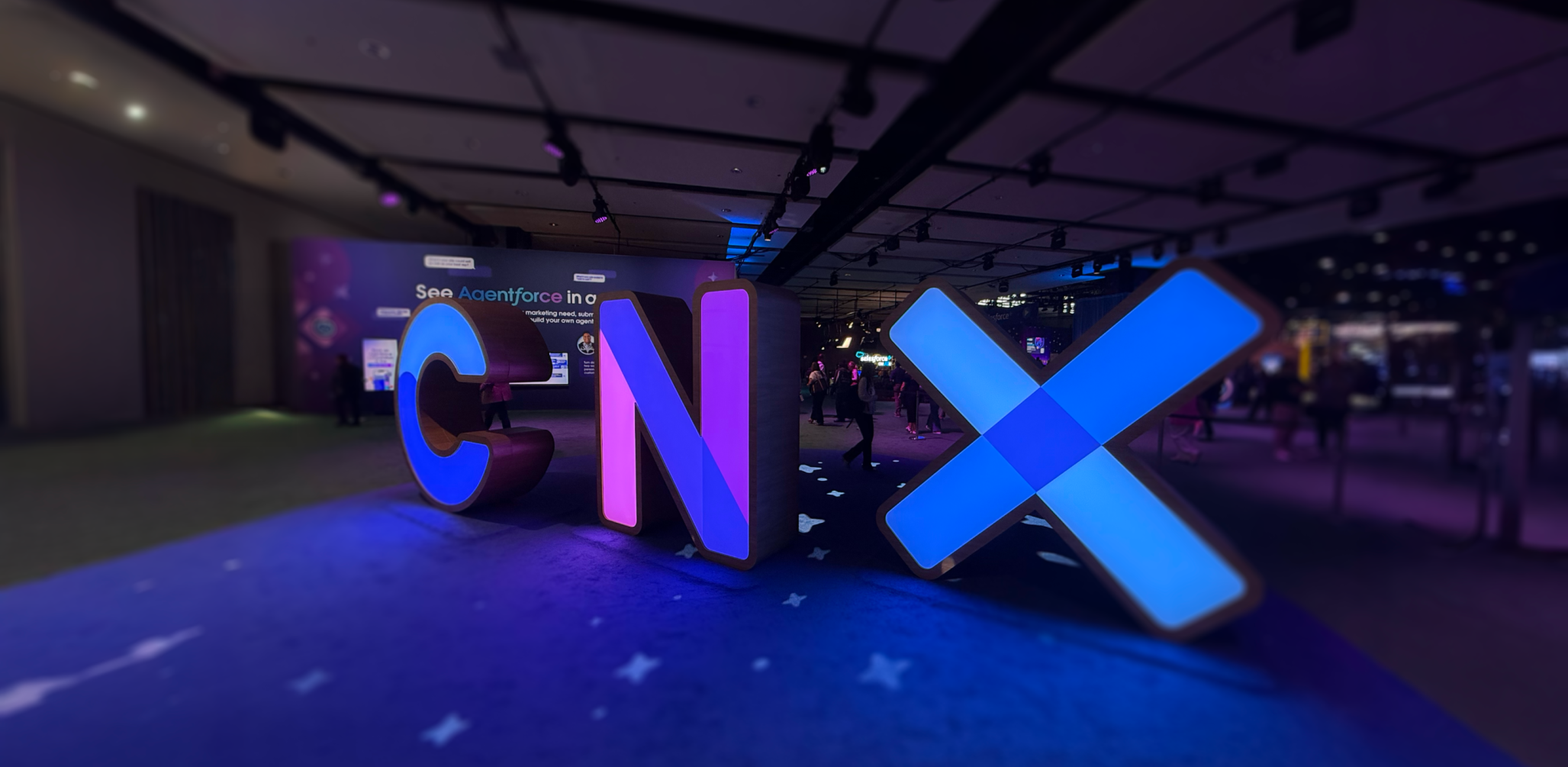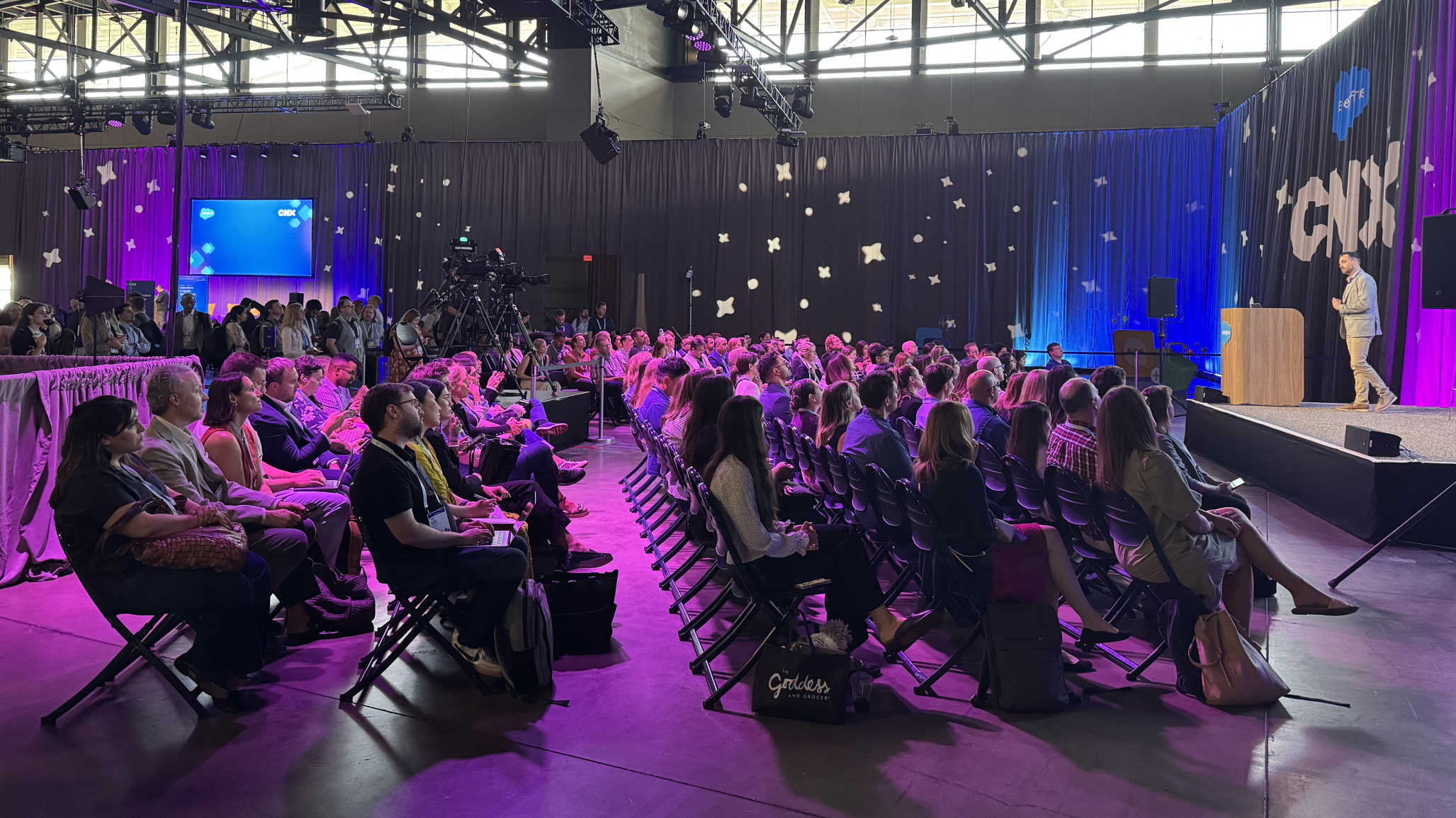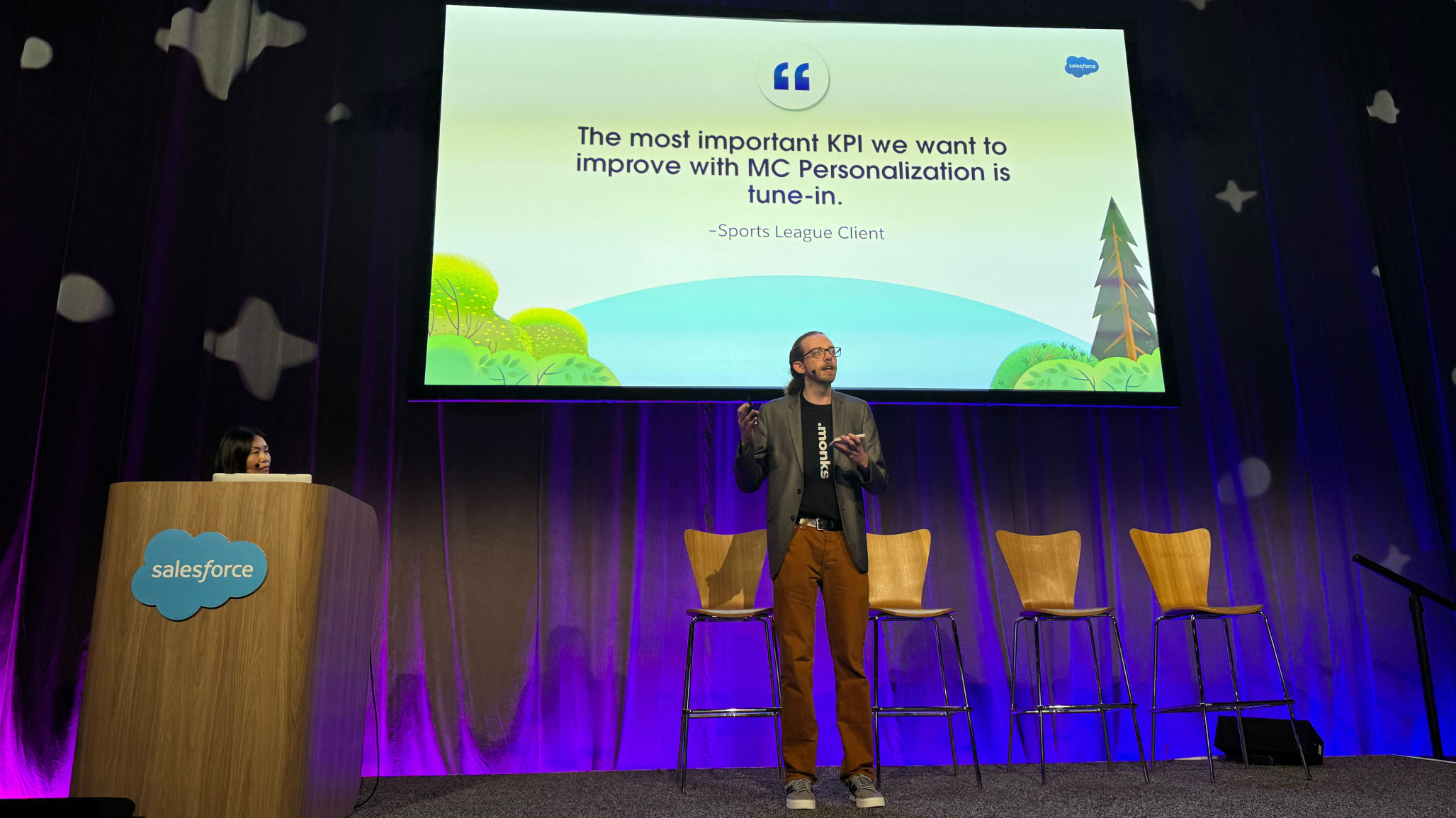Inside Salesforce Connections 2025 and the Conversational Potential of Agentic AI

Each year, Salesforce Connections brings together marketers, technologists, and digital leaders to explore the cutting edge of customer engagement. It’s a key moment for the industry to see what’s next for the Salesforce platform and the broader ecosystem. As a Salesforce partner, our team was on the ground, and one theme emerged with crystal clarity: the role of AI is undergoing a fundamental evolution. The vision on display at Connections was not just about making existing tools smarter, but about repositioning AI as the primary, conversational interface between a brand and its customers.
In fact, the concept that echoed through every session was the rise of the AI agent. Far from being just another chatbot, Salesforce’s powerful agentic technology, Agentforce, is positioned as a new face for the brand—a concierge, a personal shopper and a problem-solver, all powered by a company's unique data and content. This vision has the potential to reshape everything from customer service to a marketer's daily workflow.
So, let’s unpack the key announcements that build toward this vision. We’ll explore what it means to redefine customer interactions through AI agents, look at the underlying platform changes in Data Cloud and Marketing Cloud that make it possible, and contextualize how this could transform your day-to-day reality.
AI agents are transforming brand communication into a dialogue.
For years, digital marketing has largely been a monologue where brands broadcast messages and hope customers are listening. The vision presented at Connections signals a definitive move away from this dynamic. The future showcased by Salesforce is one of dialogue, where every touchpoint becomes an opportunity for a meaningful, two-way conversation orchestrated by AI.
This marks the end of the "do not reply" email. Imagine sending a promotional email with a curated set of product recommendations. Instead of that being the end of the interaction, it becomes the beginning. A customer could reply directly to the email with, “I like those pants, but do you have them in blue?” and Agentforce, acting as a personal shopper, would respond with available options, check inventory and even help complete the purchase. This transforms a static campaign into a dynamic, personal shopping experience.
This shift also forces us to rethink the purpose of content. We’ve traditionally viewed content as a destination; the goal was to get a visitor to land on a blog post or a product page. In the new paradigm, content becomes fuel for the AI engine. That blog post about new product features is no longer just for human readers; it’s a critical input that teaches AI Agents how to intelligently discuss those features with a customer. Every article, every product description, every FAQ becomes a knowledge source that makes the brand’s AI smarter and more helpful.
Ultimately, this leads to a new front door for your website. AI Agents will become the primary way visitors interact with a brand online, moving beyond static navigation and simple search bars. It will be a conversational interface that can answer complex questions, make nuanced recommendations and even take action on the user's behalf, like booking a meeting or making a reservation.

Salesforce Connections 2025 featured a broad range of talks designed to help brands build trusted, one-to-one customer relationships.
A unified platform makes all your data ready for AI.
This conversational future requires an immense amount of power running behind the scenes. The strategy presented at Connections rests on two pillars: unifying the marketer’s experience with the Marketing Cloud Next platform and making all data AI-ready with major enhancements to Data Cloud.
One of the key enablers of this vision is the forthcoming Marketing Cloud Next platform, built on Salesforce Core. It’s designed to solve the problem of platform fragmentation that has long challenged marketers who navigate disparate tools for different channels. Instead, the new vision is one of consistency, where the experience is seamless from one tool to the next. The HTML editor for building a web campaign will look and feel just like the one for creating an email. The same powerful product recommendation engine will be used across every channel, from web to email to mobile. And a single, unified AI brain—Agentforce—will power every interaction. This consistency will not only streamline workflows but also make it significantly easier to cross-train teams, allowing them to become true cross-channel experts.
Of course, any AI is only as good as the data it’s trained on. This is where the enhancements to Data Cloud become critical. Salesforce showcased features designed to supercharge the process of getting data ready for AI agents and recommendation engines.
- A renewed focus on data foundations: While new features are exciting, they amplify the need for a solid data foundation. Without it, brands face common challenges like low-quality data that erodes trust, data sprawl across disconnected systems, and limited access that prevents teams from acting on insights. Getting the foundation right is the prerequisite to unlocking the true power of AI.
- Smarter, broader data resolution: We’re familiar with identity resolution for customer profiles, but a key enhancement is the extension of these resolution rules to all Data Model Objects (DMOs). Imagine being able to resolve your entire product catalog, ensuring clean, consistent product data for your AI to use.
- Making unstructured data usable: One of the most powerful announcements was the ability to "vectorize" unstructured data. In simple terms, this is a kind of technological magic that allows AI to understand the meaning and context of content without needing manual tags. The full text of a blog post can now be used as if it were perfectly structured data, allowing the AI to mathematically determine which parts are most relevant for answering a specific question.
- Secure, seamless collaboration: To further break down data silos, Salesforce announced Data Cloud-to-Data Cloud zero-copy connectors. This will allow different business units, or even different companies, to join their Data Cloud instances together. These “data clean rooms” enable data sharing for richer insights in a completely privacy-compliant way.
AI will become an essential co-pilot for every marketer.
So, what does this all mean for the marketer? Their role will evolve from a manual builder to something more akin to a creative director. Using Agentforce, a marketer will be able to generate campaign ideas, customer journeys and even certain components of creative assets simply by providing a strategic brief. Crucially, this output is fully editable. The marketer remains in complete control, but their time is freed up to focus on strategy, creative oversight and optimization, rather than the nuts and bolts of campaign setup and creative production.
Monks is also building tools that empower marketers to take their ability to scale content to the next level. Monks.Flow can be integrated into Salesforce to supercharge a marketer's ability to build net new creative assets that power these journeys and are incorporated into these HTML templates to support better, smarter dynamic personalization.

The author of this piece, Nathan Bouman, spoke on stage at Salesforce Connections to discuss personalized outreach that drives fan loyalty, ticket sales and streaming.
Collaboration will also become more fluid. These AI agents can be invited directly into Slack channels, acting as a new kind of teammate. Teams will be able to brainstorm with the agent, review its proposals in real-time and collaborate on campaign elements in the same digital space where they conduct the rest of their work.
Finally, this changes how we approach analytics. Instead of digging through complex dashboards and manually cross-referencing reports, marketers will be able to use AI dashboards to get instant, natural-language summaries of campaign and channel effectiveness. This boosts the productivity of not just marketers, but data scientists as well, allowing them to focus on deeper strategic questions instead of routine reporting.
Brands can prepare now for this conversational shift.
The message from Salesforce Connections was clear: the future of marketing is a shift from monologue to dialogue. This approach is built on the pillars of a unified platform that simplifies execution, smarter data that makes every piece of content valuable and AI co-pilots that empower marketers to work more strategically and creatively.
The key takeaway for brands isn't simply to "buy more AI." It's to start thinking differently today. How can we prepare our content to be AI fuel? How can we structure our data to be ready for these new conversational experiences? Those who begin asking these questions now will be the ones best prepared to lead in the conversational future. The time to prepare is now.
Related
Thinking
Sharpen your edge in a world that won't wait
Sign up to get email updates with actionable insights, cutting-edge research and proven strategies.
Monks needs the contact information you provide to us to contact you about our products and services. You may unsubscribe from these communications at any time. For information on how to unsubscribe, as well as our privacy practices and commitment to protecting your privacy, please review our Privacy Policy.



